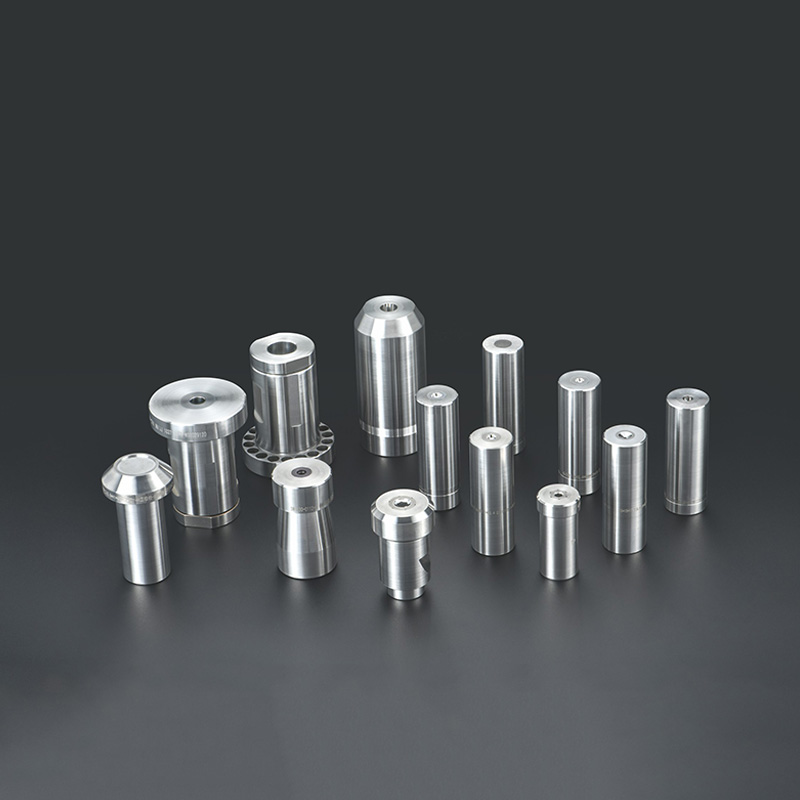Cold Heading is a widely used manufacturing process where metal is shaped by applying pressure without heating it to high temperatures. This method is commonly employed in producing fasteners, bolts, nuts, and other metal components. Over the years, Cold Heading Die technology has evolved significantly, incorporating advanced machinery, coatings, and design tools to improve efficiency, precision, and the overall lifespan of dies. In this article, we explore the latest innovations in Cold Heading Die technology, focusing on the use of CNC machines, advanced coatings, and 3D printing for die prototypes.

1. CNC Machines: Precision and Efficiency
Computer Numerical Control (CNC) machines have revolutionized cold heading die manufacturing by providing unprecedented precision and efficiency. CNC machines are automated, meaning they can be programmed to perform complex tasks with minimal human intervention. This leads to:
Increased Precision: CNC machines allow for highly accurate cutting, grinding, and shaping of die components. This ensures that the dies meet the exact specifications needed for producing high-quality metal parts.
Faster Production Times: With automation, CNC machines can operate continuously, reducing the overall production time of Cold Heading Dies. This is especially valuable in large-scale manufacturing environments where reducing lead times is crucial to maintaining high throughput.
Customization: CNC technology enables manufacturers to easily modify and produce custom dies based on specific requirements. The adaptability of CNC systems makes them ideal for companies that need to produce unique or specialized components.
2. Advanced Coatings for Enhanced Durability
Cold heading dies are subjected to extreme stress and wear due to the pressure exerted on the material during the shaping process. As such, ensuring that the dies maintain their performance over time is crucial. Recent innovations in die coatings have greatly improved the longevity and functionality of cold heading dies.
Hard Coatings: Coatings like titanium nitride (TiN), titanium carbonitride (TiCN), and chromium nitride (CrN) have been developed to improve the hardness and wear resistance of dies. These coatings reduce friction between the die and the workpiece, leading to less material buildup and a smoother operation. This is particularly useful when working with high-strength materials or high-volume production runs.
Self-lubricating Coatings: Some new coatings feature self-lubricating properties, reducing the need for external lubrication during the cold heading process. This can minimize downtime and improve the overall efficiency of the manufacturing process. Self-lubricating coatings also help to prevent heat buildup, which can damage the die over time.
Anti-corrosion Coatings: Corrosion can be a significant issue for cold heading dies, especially in humid or harsh environments. Anti-corrosion coatings, such as nickel or copper-based coatings, can be applied to die surfaces to protect against rust and degradation, ensuring longer tool life and fewer maintenance requirements.
3. 3D Printing for Die Prototypes and Customization
The application of 3D printing, also known as additive manufacturing, has made a significant impact on the prototyping and design stages of cold heading die production. 3D printing allows manufacturers to create accurate and functional prototypes much faster and at a lower cost than traditional methods.
Rapid Prototyping: With 3D printing, die manufacturers can quickly produce prototypes of new die designs, test their functionality, and make adjustments before committing to full-scale production. This shortens the product development cycle and allows for faster iteration, helping to bring innovative cold heading dies to market more quickly.
Complex Geometries: 3D printing enables the creation of more intricate and complex die designs that would be difficult or impossible to achieve with traditional machining methods. This opens up new possibilities for improving the efficiency and functionality of cold heading dies, such as creating cooling channels within the die or integrating other features directly into the die design.
Customization: 3D printing also offers a new level of customization. Manufacturers can produce small runs of specialized or one-off dies tailored to specific customer needs. This is particularly valuable in industries where high levels of customization are required, such as aerospace or medical device manufacturing.
4. Simulation Software and Virtual Prototyping
Along with physical innovations, software advancements have also played a key role in optimizing cold heading die design. Modern simulation software allows manufacturers to model and test die designs virtually before committing to physical production.
Virtual Testing: Using Finite Element Analysis (FEA), manufacturers can simulate the stresses and pressures that a cold heading die will experience during operation. This allows them to identify weak points or areas where the die may fail, enabling early intervention before costly mistakes are made.
Optimization: Simulation software can help optimize the design for both performance and cost-efficiency. By adjusting parameters like die geometry and material selection, manufacturers can create more efficient dies that reduce wear and extend tool life.
5. Integration of Smart Technology and IoT
The latest cold heading die technology also incorporates smart devices and the Internet of Things (IoT), allowing for real-time monitoring and maintenance of die equipment.
Predictive Maintenance: By equipping cold heading dies with sensors and IoT technology, manufacturers can track the performance of dies in real time and predict when maintenance is required. This predictive maintenance reduces downtime and prevents unexpected failures, ensuring that the dies operate at optimal performance.
Data-Driven Insights: Smart sensors can also collect data on die wear, temperature, and pressure during operation. This data can be analyzed to improve the design of future dies and optimize the cold heading process for better efficiency.
The evolution of cold heading die technology has opened up numerous possibilities for improving the efficiency, precision, and durability of the manufacturing process. From CNC machines that enhance accuracy and speed, to advanced coatings that extend die life, to 3D printing for rapid prototyping and customization, these innovations are transforming the cold heading industry. By adopting these technologies, manufacturers can not only improve their processes but also deliver higher-quality products in less time and at lower costs. As these advancements continue to evolve, the future of cold heading die technology looks promising, with even greater levels of precision, efficiency, and sustainability on the horizon.











